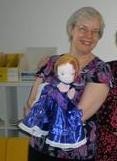
Essays and Poems
2012年度に引き続き、Jayne Ikeshima 先生の素敵な英語エッセイや英語詩をご紹介します。
When I was a little girl growing up in Michigan USA, I loved playing outdoors in the summer. There were so many things to do. ... from "Memories (July, 2013)"
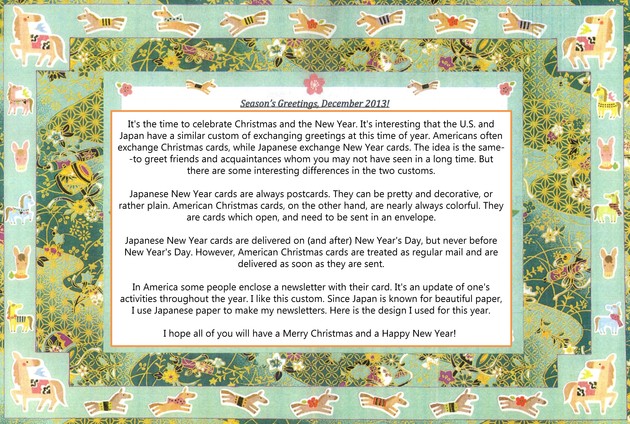
The New Year 2014 is The Year of The Horse. Recent Horse Years are: 1918, 1930, 1942, 1954, 1966, 1978, 1990, and 2002. If you were born in any of those, 2014 is your year, so have a good one. And from me to you, all the best in 2014!
Jayne Ikeshima
Jayne Ikeshima
イケシマ先生から、みなさんに年末年始のご挨拶です。
2014年は午年です。どうぞ良い年になりますように。
年末年始に挨拶状の交換するという点では、アメリカも日本もよく似た習慣を持っています。アメリカでは「クリスマスカード」を、日本では「年賀状」のやり取りをします。最近では、インターネットのメールサービスを通しての挨拶状を送る人が増えてきていますが、郵便受けにカードや年賀状が入っていると嬉しいですね。
2014年は午年です。どうぞ良い年になりますように。
年末年始に挨拶状の交換するという点では、アメリカも日本もよく似た習慣を持っています。アメリカでは「クリスマスカード」を、日本では「年賀状」のやり取りをします。最近では、インターネットのメールサービスを通しての挨拶状を送る人が増えてきていますが、郵便受けにカードや年賀状が入っていると嬉しいですね。
Have you ever seen, or helped with the annual Keiai Festival? It's held every year in November, and is called "bunkasai" or "gakuensai." This year it will be November 9th and 10th.
Helping with the Keiai Festival can be a lot of work, but is a great way to have fun and to make friends. Even if you cannot help prepare for the festival, you should come to see it. There are a lot of events to enjoy, and so many good things to eat!
On Sunday November 10th, my Seminar students and I will put on a puppet show. It will be in the 5th floor of Building 3, room 3508 at 11:00. It will feature twenty-five different puppets and four songs. We have all been practicing hard, so please come and watch if you can. I am sure you will enjoy it!
Helping with the Keiai Festival can be a lot of work, but is a great way to have fun and to make friends. Even if you cannot help prepare for the festival, you should come to see it. There are a lot of events to enjoy, and so many good things to eat!
On Sunday November 10th, my Seminar students and I will put on a puppet show. It will be in the 5th floor of Building 3, room 3508 at 11:00. It will feature twenty-five different puppets and four songs. We have all been practicing hard, so please come and watch if you can. I am sure you will enjoy it!
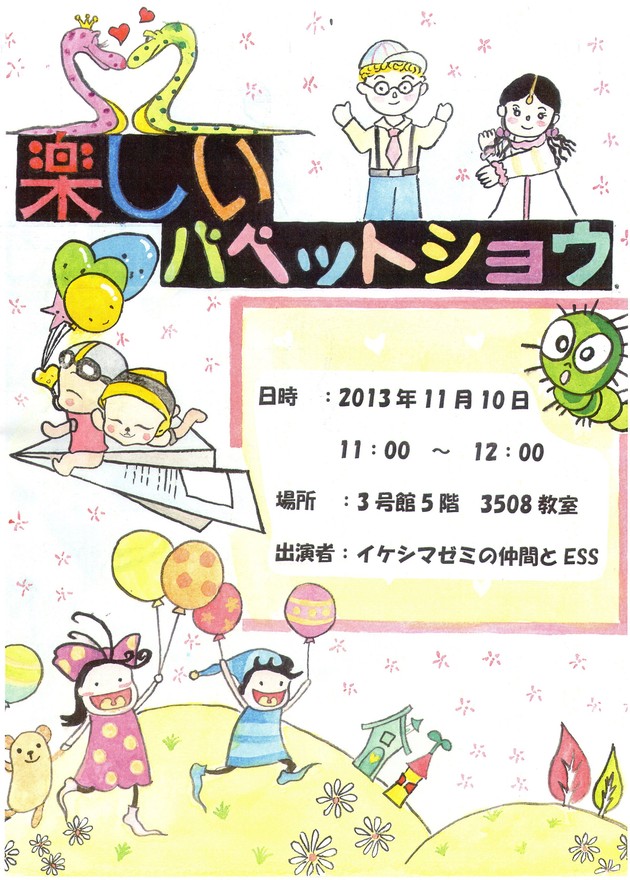
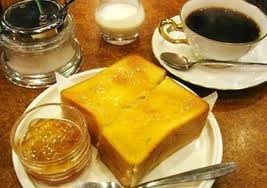
Human beings have five senses: sight, hearing, taste, smell, and touch. Do you know which of these senses can bring back stronger memories than any of the others?
If you guessed "smell" then you are correct. Smell is the most memory-evoking sense. The scent of something you have not smelled in a long while can take you back in time to any age.
There are many smells that remind me of my childhood in the U.S. The happy smell of a new box of crayons and a brand-new coloring book. The summer smell of freshly-cut grass. The homey American smell of fresh coffee and toast, first thing in the morning. The delicious smell of Christmas cookies baking.
There are smells that I love that I had never smelled before I came to Japan. The Japanese smell of a tatami-mat room. The strong smell of grilled fish coming from houses in my neighborhood when I take a walk. The smell of a sushi shop. The comforting smell of fresh hot green tea. The winter smell of a room heated by an old-fashioned kerosene heater.
Did you know that similar shops will smell different in different countries? The smell of a supermarket in the U.S. is very different from the smell of a supermarket in Japan. The smell of a bakery in Japan is nothing like that of a bakery in the U.S. There are many reasons for this. Can you guess what they might be?
One year when I went back to the U.S., I decided to cook some Japanese food for my parents. I thought they would like miso soup, a particular favorite of mine. I make it often in Japan. To my surprise, when I made miso soup in my mother's kitchen, it did not smell good. I used the same ingredients that I use in Japan (hon-dashi, miso, vegetables, and wakame seaweed) but in my mother's kitchen, miso soup smelled horribly fishy. Somehow, the smell was terribly out of place, and even unpleasant in my mother's American kitchen. Fortunately, the soup tasted good, and I think my parents rather liked it. But it did not smell right to me, even though it was the same soup I always make in Japan.
Whether we like or dislike a particular smell can depend on what we associate with that smell. I often go with my Japanese family to onsen resorts. I love visiting onsens, but I don't like the smell. The sulfur-gas smell (similar to rotten eggs!) makes me want to hold my nose. But I think that many Japanese people must like this smell--especially those who grew up in mountainous onsen areas. To these people, the smell of an onsen must be the comforting smell of their childhood and home.
What are your favorite smells? Are there any smells that you strongly dislike? It's a fascinating subject to think about!
If you guessed "smell" then you are correct. Smell is the most memory-evoking sense. The scent of something you have not smelled in a long while can take you back in time to any age.
There are many smells that remind me of my childhood in the U.S. The happy smell of a new box of crayons and a brand-new coloring book. The summer smell of freshly-cut grass. The homey American smell of fresh coffee and toast, first thing in the morning. The delicious smell of Christmas cookies baking.
There are smells that I love that I had never smelled before I came to Japan. The Japanese smell of a tatami-mat room. The strong smell of grilled fish coming from houses in my neighborhood when I take a walk. The smell of a sushi shop. The comforting smell of fresh hot green tea. The winter smell of a room heated by an old-fashioned kerosene heater.
Did you know that similar shops will smell different in different countries? The smell of a supermarket in the U.S. is very different from the smell of a supermarket in Japan. The smell of a bakery in Japan is nothing like that of a bakery in the U.S. There are many reasons for this. Can you guess what they might be?
One year when I went back to the U.S., I decided to cook some Japanese food for my parents. I thought they would like miso soup, a particular favorite of mine. I make it often in Japan. To my surprise, when I made miso soup in my mother's kitchen, it did not smell good. I used the same ingredients that I use in Japan (hon-dashi, miso, vegetables, and wakame seaweed) but in my mother's kitchen, miso soup smelled horribly fishy. Somehow, the smell was terribly out of place, and even unpleasant in my mother's American kitchen. Fortunately, the soup tasted good, and I think my parents rather liked it. But it did not smell right to me, even though it was the same soup I always make in Japan.
Whether we like or dislike a particular smell can depend on what we associate with that smell. I often go with my Japanese family to onsen resorts. I love visiting onsens, but I don't like the smell. The sulfur-gas smell (similar to rotten eggs!) makes me want to hold my nose. But I think that many Japanese people must like this smell--especially those who grew up in mountainous onsen areas. To these people, the smell of an onsen must be the comforting smell of their childhood and home.
What are your favorite smells? Are there any smells that you strongly dislike? It's a fascinating subject to think about!
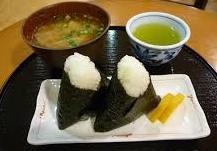
五感(視覚、聴覚、味覚、嗅覚、触覚)の中で、最も強く私たちの思い出を喚起するものは、どれでしょうか?
正解は、嗅覚です。においは記憶と、とても強く結びついています。例えば、イケシマ先生にとって、真新しいクレヨンや新品の絵本のにおいは、こどもの頃の幸せな記憶を思い出させてくれます。
ところで、においは世界のどこでも同じなのでしょうか?アメリカと日本を行き来するイケシマ先生は、同じものでも、地域によってそのにおいが異なることにびっくりした体験をなさっています。さて、それはなんだったでしょうか?
正解は、嗅覚です。においは記憶と、とても強く結びついています。例えば、イケシマ先生にとって、真新しいクレヨンや新品の絵本のにおいは、こどもの頃の幸せな記憶を思い出させてくれます。
ところで、においは世界のどこでも同じなのでしょうか?アメリカと日本を行き来するイケシマ先生は、同じものでも、地域によってそのにおいが異なることにびっくりした体験をなさっています。さて、それはなんだったでしょうか?
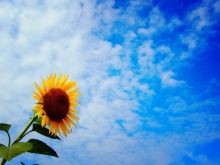
I am writing this in the month of August, and is very hot. It takes a lot of stamina to commute to work in this hot weather. I know this because I have been coming in to Keiai for the past week to do my final grading and other work.
I have a long commute to school. One way, it involves four train stations, three trains, and two train changes. This is in addition to 35 minutes of walking, some of it from my home to my local train station, and some of it from Inage station to Keiai University. To get from my house to Keiai takes me a little over an hour and a half.
As all hot-weather commuters know, it's good to be careful when going anywhere at this time of year. In addition to necessary items such as my train pass, money, and cell-phone, there are five things I always carry when commuting in the summer. Can you guess what they are? Here is a hint: They begin with the letters F, T, D, U, and S.
The first one is a FAN. I carry a sensu, (a folding fan) that I bought at a 100-yen store.
The second one is a small TOWEL. In Japanese, it is called an ase-fuki towel. The exact translation to English is "sweat-wiping towel."
The third one is a DRINK. Many people carry water, but my favorite drink to carry is cold green tea. I usually buy it from a vending machine.
The fourth thing is a SUN UMBRELLA, or hi-gasa. This is a Japanese custom that I like very much. A sun umbrella keeps you cool. In recent years black sun-umbrellas have become popular. I have three sun umbrellas in all. Two of them are beige, and one of them is black.
The fifth thing is a SHAWL. You may wonder why I carry a shawl if the weather is so hot. It's because trains and buildings are sometimes overly air-conditioned and too cool. A shawl is easier to put on than a sweater, and it takes up less room in my bag.
Here is another question for you: Which of these five things do MEN usually NOT carry?
The answers of course are a SHAWL and a SUN UMBRELLA. A shawl is women's clothing. And a sun umbrella is generally thought of as a female item also. Recently though, some men are starting to use sun umbrellas (also called "parasols").
See an article on Japanese men with umbrella
It makes sense for both men and women to carry a sun umbrella, since it acts as protection from heat stroke. Perhaps in the future everyone will carry one.
To all Keiai students, teachers, and staff: I hope you will have a great summer, and KEEP COOL! See you again in the fall! --Jayne Ikeshima
I have a long commute to school. One way, it involves four train stations, three trains, and two train changes. This is in addition to 35 minutes of walking, some of it from my home to my local train station, and some of it from Inage station to Keiai University. To get from my house to Keiai takes me a little over an hour and a half.
As all hot-weather commuters know, it's good to be careful when going anywhere at this time of year. In addition to necessary items such as my train pass, money, and cell-phone, there are five things I always carry when commuting in the summer. Can you guess what they are? Here is a hint: They begin with the letters F, T, D, U, and S.
The first one is a FAN. I carry a sensu, (a folding fan) that I bought at a 100-yen store.
The second one is a small TOWEL. In Japanese, it is called an ase-fuki towel. The exact translation to English is "sweat-wiping towel."
The third one is a DRINK. Many people carry water, but my favorite drink to carry is cold green tea. I usually buy it from a vending machine.
The fourth thing is a SUN UMBRELLA, or hi-gasa. This is a Japanese custom that I like very much. A sun umbrella keeps you cool. In recent years black sun-umbrellas have become popular. I have three sun umbrellas in all. Two of them are beige, and one of them is black.
The fifth thing is a SHAWL. You may wonder why I carry a shawl if the weather is so hot. It's because trains and buildings are sometimes overly air-conditioned and too cool. A shawl is easier to put on than a sweater, and it takes up less room in my bag.
Here is another question for you: Which of these five things do MEN usually NOT carry?
The answers of course are a SHAWL and a SUN UMBRELLA. A shawl is women's clothing. And a sun umbrella is generally thought of as a female item also. Recently though, some men are starting to use sun umbrellas (also called "parasols").
See an article on Japanese men with umbrella
It makes sense for both men and women to carry a sun umbrella, since it acts as protection from heat stroke. Perhaps in the future everyone will carry one.
To all Keiai students, teachers, and staff: I hope you will have a great summer, and KEEP COOL! See you again in the fall! --Jayne Ikeshima
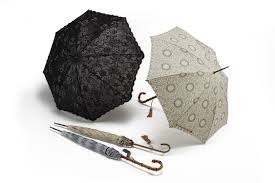
連日の猛暑は体にこたえますね。暑いさなかに外出するとき、皆さんの必需品はなんでしょうか?
イケシマ先生には5つの必需品があるそうです。「F」「T」「D」「U」「S」がその頭文字です。
さて何の頭文字だったでしょうか?
みなさんは、5つすべてわかりましたか?
イケシマ先生には5つの必需品があるそうです。「F」「T」「D」「U」「S」がその頭文字です。
さて何の頭文字だったでしょうか?
みなさんは、5つすべてわかりましたか?
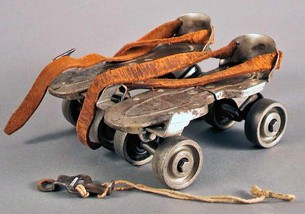
When I was a little girl growing up in Michigan USA, I loved playing outdoors in the summer. There were so many things to do. I could ride my bicycle, or climb the trees in our backyard, or help my mother plant flowers in her garden. I could play hide-and-seek with my friends, or play catch or other ball games. But my favorite activity of all was roller-skating.
In the neighborhood where I lived there were smooth, concrete sidewalks. They were perfect for roller-skating. In those days roller-skates were made of metal and had four wheels each--two on each side of the skate. To fasten the skates to my shoes, I used leather straps and a special "skate key" which I then carried on a string around my neck.
Learning to roller-skate was not easy. I fell down many many times. But I never gave up. I kept trying, and little by little, I got good at roller-skating. I loved the feeling of skating down a sidewalk on wheels. I could skate as fast as my friends could run.
It's hard to believe that these memories of mine are from fifty years ago. What are some things that you, or your parents, or your grandparents used to do when they were children? Do children today still do the same things?
In the neighborhood where I lived there were smooth, concrete sidewalks. They were perfect for roller-skating. In those days roller-skates were made of metal and had four wheels each--two on each side of the skate. To fasten the skates to my shoes, I used leather straps and a special "skate key" which I then carried on a string around my neck.
Learning to roller-skate was not easy. I fell down many many times. But I never gave up. I kept trying, and little by little, I got good at roller-skating. I loved the feeling of skating down a sidewalk on wheels. I could skate as fast as my friends could run.
It's hard to believe that these memories of mine are from fifty years ago. What are some things that you, or your parents, or your grandparents used to do when they were children? Do children today still do the same things?
子どもの頃、どんな遊びをしましたか?
ミシガン州で育ったイケシマ先生は、外遊びが大好きなお転婆なお嬢さんだったようです。自転車に乗ること、木登り、花壇の手入れ、かくれんぼ(play hide-and-seek)、ボール遊び(play catch or other ball games)・・・。そうした中で、何と言っても大好きだったのが、ローラースケートだったとか。当時のローラースケート靴は金属製で皮ひもで足を固定するつくりでした。1960年代のローラースケート靴の写真をご覧ください。この靴では、バランスを取るのがとても難しそうです。実際、幼かったイケシマ先生は何度も何度も転んだそうです。しかし、あきらめないで粘り強く挑戦し、最後には、誰にも負けないくらいのローラースケーターになったそうです。
イケシマ先生のこどもの頃の思い出、素敵ですね。さて、あなたにはどんな思い出がありますか?
ミシガン州で育ったイケシマ先生は、外遊びが大好きなお転婆なお嬢さんだったようです。自転車に乗ること、木登り、花壇の手入れ、かくれんぼ(play hide-and-seek)、ボール遊び(play catch or other ball games)・・・。そうした中で、何と言っても大好きだったのが、ローラースケートだったとか。当時のローラースケート靴は金属製で皮ひもで足を固定するつくりでした。1960年代のローラースケート靴の写真をご覧ください。この靴では、バランスを取るのがとても難しそうです。実際、幼かったイケシマ先生は何度も何度も転んだそうです。しかし、あきらめないで粘り強く挑戦し、最後には、誰にも負けないくらいのローラースケーターになったそうです。
イケシマ先生のこどもの頃の思い出、素敵ですね。さて、あなたにはどんな思い出がありますか?
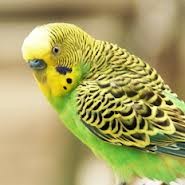
Mr. Ikeshima is Japanese, and I am American. We have two daughters. Both of them are grown up now, and in their twenties. When they were children they asked if we could have a pet.
Of course we wanted to have a pet! We thought about getting a cat or a dog. But there was a problem. We often went to the United States for our long vacations to visit my family there. When we went to the U.S., we were gone from Japan for a long time--usually three or four weeks. We did not like to think of leaving a dog or a cat behind for that long.
Then we had an idea. We would buy a bird! A parakeet. My daughters, who liked birds, were happy with this idea. And since a bird lived in a cage, it would be easy to find someone to take care of it while we were gone.
Parakeets (also called budgerigars, or "budgies") are a kind of parrot, and they can be taught to talk. We bought a green-and-yellow parakeet, and we named him "Paco." We taught Paco to say many things. To teach a parakeet to talk, you say a phrase over and over again, until they learn it. Here are some of the things we taught Paco to say:
"Give me a kiss."
"Hello there!"
"Pretty bird!"
"Paco is a smart bird."
"What are you doing?"
"What are you talking about?"
"Good morning, Paco!"
"Goodnight, Paco!"
Once parakeets learn to talk, they can pick up phrases on their own. These are usually things that they hear quite often. We were very surprised the day Paco suddenly began saying, "Brush your teeth, Fumi." I had not realized that I said that to my older daughter so often!
Naomi, our younger daughter, was always getting into mischief. Soon Paco was saying "NAOMI!" in an exact imitation of me when I was scolding Naomi for something naughty she had done.
Paco, our parakeet, died long ago, but we have many fond memories of him. If you would like to hear a parakeet talk, here is a video of a very talkative parakeet named "Disco."
Disco's video(youtube)
The video has subtitles, but even without them you can hear what Disco says very clearly. Toward the end of the video, he even says a few words in Japanese. He is a first-class talker!
Of course we wanted to have a pet! We thought about getting a cat or a dog. But there was a problem. We often went to the United States for our long vacations to visit my family there. When we went to the U.S., we were gone from Japan for a long time--usually three or four weeks. We did not like to think of leaving a dog or a cat behind for that long.
Then we had an idea. We would buy a bird! A parakeet. My daughters, who liked birds, were happy with this idea. And since a bird lived in a cage, it would be easy to find someone to take care of it while we were gone.
Parakeets (also called budgerigars, or "budgies") are a kind of parrot, and they can be taught to talk. We bought a green-and-yellow parakeet, and we named him "Paco." We taught Paco to say many things. To teach a parakeet to talk, you say a phrase over and over again, until they learn it. Here are some of the things we taught Paco to say:
"Give me a kiss."
"Hello there!"
"Pretty bird!"
"Paco is a smart bird."
"What are you doing?"
"What are you talking about?"
"Good morning, Paco!"
"Goodnight, Paco!"
Once parakeets learn to talk, they can pick up phrases on their own. These are usually things that they hear quite often. We were very surprised the day Paco suddenly began saying, "Brush your teeth, Fumi." I had not realized that I said that to my older daughter so often!
Naomi, our younger daughter, was always getting into mischief. Soon Paco was saying "NAOMI!" in an exact imitation of me when I was scolding Naomi for something naughty she had done.
Paco, our parakeet, died long ago, but we have many fond memories of him. If you would like to hear a parakeet talk, here is a video of a very talkative parakeet named "Disco."
Disco's video(youtube)
The video has subtitles, but even without them you can hear what Disco says very clearly. Toward the end of the video, he even says a few words in Japanese. He is a first-class talker!
インコやオウムは人の言葉を口にします。一緒に暮らしていると、私たちが話しかける言葉(時に、聞いた言葉)をいつの間にかわがものにしています。彼らのリスニング能力とスピーキング能力は素晴らしいです。おしゃべりなインコ、パコちゃんのおかげで、自分でも気づかなかった口癖に気づかされたイケシマ先生のお話は、インコやオウムを飼った経験のある人なら、きっと身に覚えがあるでしょう。

It seems that Japanese young people love to visit Disneyland and DisneySea. They know the famous characters, Mickey Mouse, Minnie Mouse, Donald Duck, and many others. But often when I ask my Keiai students about Disney animated movies, I learn that there are many excellent ones that they have never seen. This is unfortunate, since there are over fifty Disney animated movies, many of them classics.
There are so many things to love about Disney animated movies:
The ANIMATION. Did you know that Disney animators study the real-life movements of people and animals, and copy them exactly for their movies? To animate the Beast in Beauty and the Beast, Disney animators studied the movements of elephants, bears, buffaloes (bison), and other large mammals.
The ACCURATE DEPICTION of real-life things. Look at all the different fish in the movie The Little Mermaid. They are drawn so carefully that anyone who knows ocean creatures can easily identify them.
The SCENERY and COLORING. Watch Sleeping Beauty. Disney artists studied 13th century art of Germany, Japan, India, and other countries to create the beautiful forest scenery in this movie.
The CHARACTERS and THEIR VOICES. All Disney characters are voiced by actors and actresses who are the same ages as the characters they speak for. The little chipped teacup in Beauty and the Beast ("Chip"), is voiced by a seven-year-old boy, whose young voice is perfect for the part.
The MUSIC. Nothing can compare with the beautiful music and vocal arrangements of Disney animated movies.
Here is a delightful example of all the points I have mentioned. It's a clip from the movie Alice In Wonderland, made in 1951. Please enjoy!
Alice In Wonderland - "All In The Golden Afternoon"
There are so many things to love about Disney animated movies:
The ANIMATION. Did you know that Disney animators study the real-life movements of people and animals, and copy them exactly for their movies? To animate the Beast in Beauty and the Beast, Disney animators studied the movements of elephants, bears, buffaloes (bison), and other large mammals.
The ACCURATE DEPICTION of real-life things. Look at all the different fish in the movie The Little Mermaid. They are drawn so carefully that anyone who knows ocean creatures can easily identify them.
The SCENERY and COLORING. Watch Sleeping Beauty. Disney artists studied 13th century art of Germany, Japan, India, and other countries to create the beautiful forest scenery in this movie.
The CHARACTERS and THEIR VOICES. All Disney characters are voiced by actors and actresses who are the same ages as the characters they speak for. The little chipped teacup in Beauty and the Beast ("Chip"), is voiced by a seven-year-old boy, whose young voice is perfect for the part.
The MUSIC. Nothing can compare with the beautiful music and vocal arrangements of Disney animated movies.
Here is a delightful example of all the points I have mentioned. It's a clip from the movie Alice In Wonderland, made in 1951. Please enjoy!
Alice In Wonderland - "All In The Golden Afternoon"
ディズニーランドやディズニーシーが大好きな日本人は多いですね。ディズニーのアニメーション映画はご覧になったことがありますか?「美女と野獣」、「シンデレラ」、「白雪姫」、「不思議の国のアリス」など、アニメーション映画の名作がひしめいています。なぜ名作なのかを考えてみましょう。芸術的な作画の美しさ、キャラクターのリアルな動き、キャラクターの実年齢に合った声優、音楽の素晴らしさがあるからでしょう。ディズニーのアニメ映画は今や50作品を超えています。休日に、ディズニー作品を鑑賞してみてはいかがでしょうか?
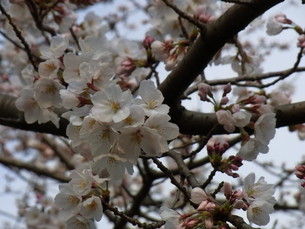
April 3rd was the day of the 2013 Keiai University Entrance Ceremony. And what weather we had in the morning!--rain and wind so strong that it was impossible to put up an umbrella without it being blown inside-out.
After the rain there were many cherry blossom petals on the ground in pretty patterns. I wrote a poem about them:
Tiny pink petals
Fastened to the pavement
By April rain.
A fairy's delicate mosaic
Seen but once a year.
A Warm Welcome to new Keiai students, and a Welcome Back to returning students. Spring Greetings to everyone, and let's have a great semester!
--Jayne Ikeshima
After the rain there were many cherry blossom petals on the ground in pretty patterns. I wrote a poem about them:
Tiny pink petals
Fastened to the pavement
By April rain.
A fairy's delicate mosaic
Seen but once a year.
A Warm Welcome to new Keiai students, and a Welcome Back to returning students. Spring Greetings to everyone, and let's have a great semester!
--Jayne Ikeshima
4月3日は敬愛大学の入学式でした。式の最中も、傘が役に立たなないほどの暴風雨が吹き荒れていました。満開の桜の花がこの雨風でずいぶんその花びらを散らせました。雨が止んだ帰り道、桜の花びらに覆われた地面を見て感じた思いを、イケシマ先生が、素敵な詩で表現してくださっています。





